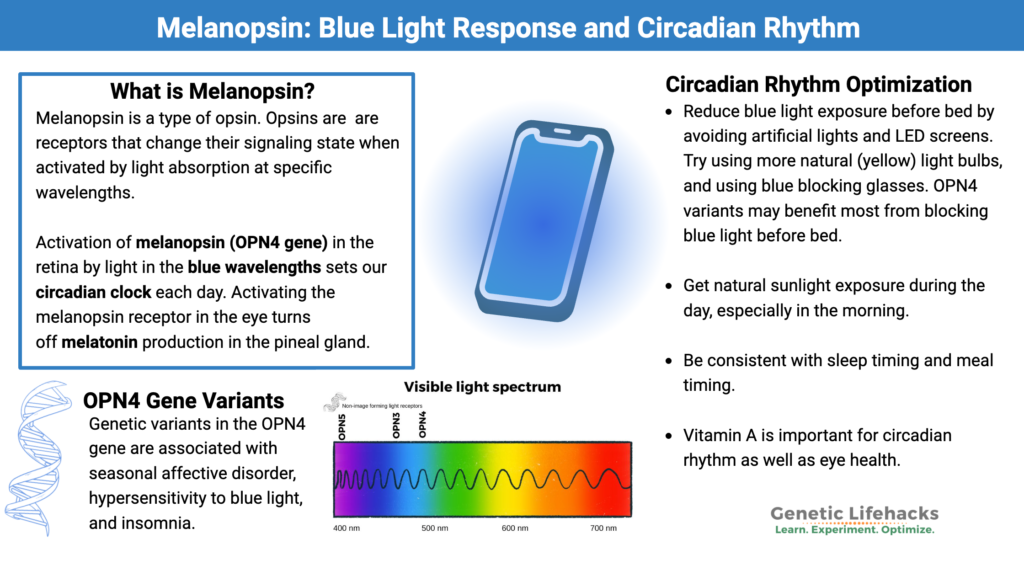How does light affect our sleep, and anchor our circadian rhythm?

From the dawn of time, our bodies have evolved to understand when it is day or night via the sun and the types and wavelengths of light it emits at different times of the day.
So our circadian rhythm which tells our body when to wake up or feel tired, has been calibrated to do this based on what light it is exposed to at specific times of the day.
Naturally, sunlight in the morning has more blue light wavelengths which wake you up from sleep peacefully, and this shifts to more sunset red-like wavelengths into the evening which send you to sleep.
This is important to you, because if your brain is receiving mixed signals from the light your exposed to it has no idea whether its day or night, and can’t regulate your body’s energy levels properly.
For example, if you’re waking up in a dark room your not receiving the natural triggers for your rhythm, and at night if your viewing sources that emit blue light wavelengths, like watching TV or your phone, melanopsin receptors in your brain think its still daytime and this suppresses your production of melatonin, a hormone which helps you sleep. Check out this paper if you want more detail.

To solve this, in the morning you want to expose yourself to blue wavelength lights, try and get outside & switch on your lights, and later in the day you want to reduce your blue light exposure, avoid screen time and bright harsh room lights.
The issue is without even realising the majority of bulbs in our bedrooms release wavelengths of blue light, which constantly stimulate your brain into thinking its day until the moment you turn them off to sleep. If you really want to have a environment that’s conducive to good sleep habits you want a bulb that not only emits blue light in the morning to wake you up peacefully, but also red light in the evening to allow your body to produce the hormones that help you sleep.
That’s why I’m working on the CircaSleep bulb, which does exactly that, to work with your body’s rhythm naturally. So you don’t need any sleeping pills and instead your bedroom becomes your ideal personal sleep environment! We’re currently developing our first proto-type and we’d love to hear your suggestions on how we can make it the perfect natural sleep aid. Over the next few weeks I’m going to be posting the journey and showing how we’re creating it on our instagram & tiktok @circasleep_official , stay tuned!
